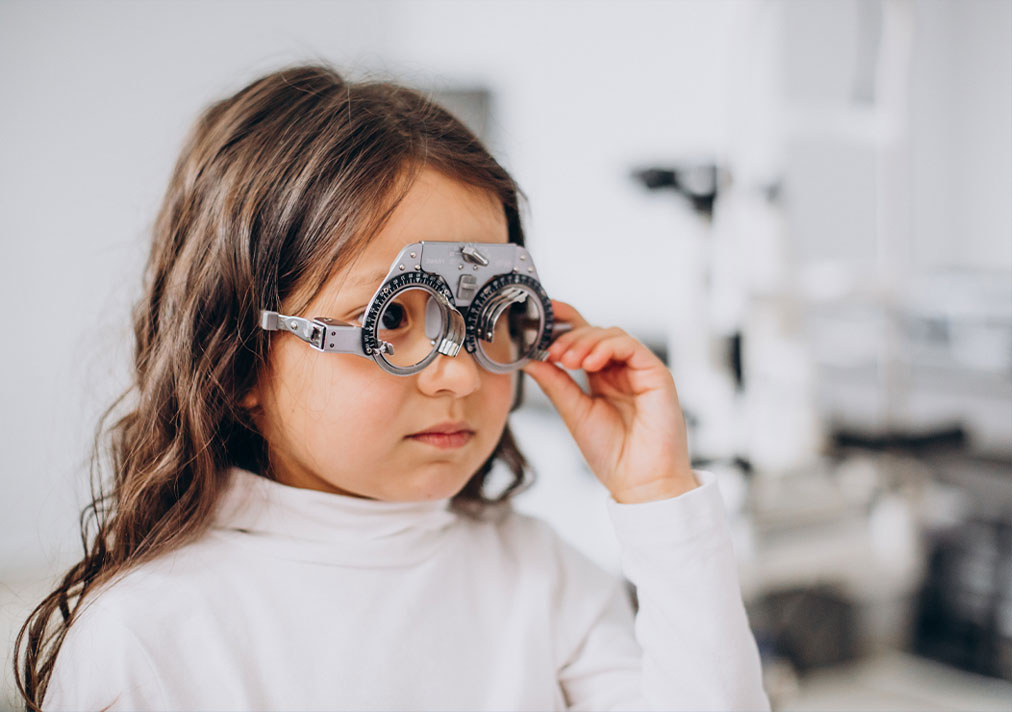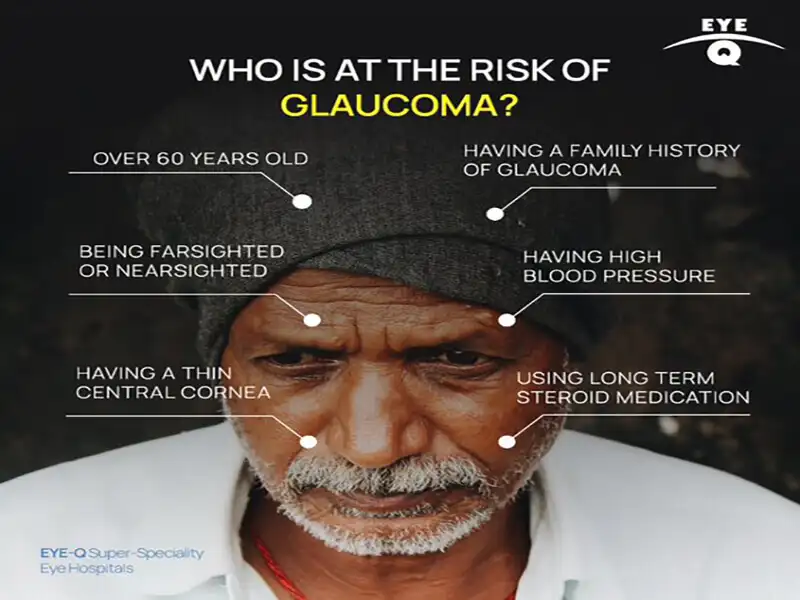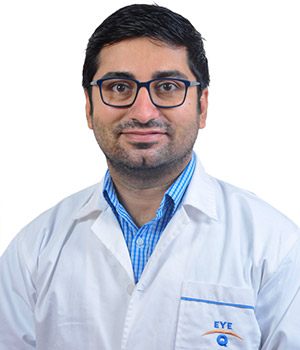Glaucoma tests comprise of the tests used to detect an eye condition that may lead to vision loss if untreated i.e. glaucoma. When the fluid inside the eye, is either formed in excess or fails to be drained adequately, it leads to glaucoma.
The Benefits of Routine Eye Exams in Preventing Glaucoma
Regular eye exams are essential for glaucoma prevention and early identification, particularly in higher-risk patients. An increased chance of getting glaucoma is shown in persons over 40, those with a family history of the condition, and those with elevated intraocular pressure. Glaucoma risk can also be raised by diseases including diabetes, hypertension, and extreme myopia.
Glaucoma can be identified by a thorough eye exam even before symptoms show up. An eye care specialist will check for damage to the optic nerve, measure IOP, evaluate the drainage angle, and test the visual field during an examination. When open-angle and angle-closure glaucoma are detected early on, when therapy is most likely to be successful, these tests are crucial.
Given that eyesight cannot be recovered once it is lost, early detection of glaucoma is essential. Early diagnosis increases the efficacy of treatment choices, such as medication, laser therapy, and surgery. Frequent eye exams provide prompt intervention that can reduce or stop the disease’s course and preserve vision for as long as feasible. They also allow for the monitoring of eye health over time.
Understanding the Types of Glaucoma: Open-Angle vs. Angle-Closure
Open-angle glaucoma and Angle-Closure Glaucoma are the two primary forms of glaucoma. It is essential to comprehend the distinctions between these kinds to manage and stop the condition from getting worse.
- Open-angle glaucoma: It is the most prevalent kind, accounting for over 90% of all glaucoma cases. This kind of causes a progressive rise in intraocular pressure (IOP) when the trabecular meshwork partially blocks while the drainage angle created by the cornea and iris stays open.
Over time, this pressure accumulation harms the optic nerve and causes vision loss. Open-angle glaucoma develops gradually and painlessly, frequently remaining undetected until serious harm has been done. To stop severe vision loss, early identification through routine eye exams is essential.
- Angle-Closure Glaucoma: This is a rare yet serious condition. IOP rises quickly as a result of the drainage angle between the eye and cornea abruptly closing. This may cause symptoms including excruciating eye pain, headaches, nausea, blurred vision, and seeing halos around lights appear suddenly.
Angle-closure glaucoma is a medical emergency that has to be treated right away to avoid irreversible vision loss. If left untreated, angle-closure glaucoma can result in visual loss in a matter of hours, as opposed to open-angle glaucoma, which progresses gradually.
The drainage angle in the eye’s anatomy and operation provide the main distinction between the two. Angle-closure glaucoma is an acute illness that requires prompt attention, whereas open-angle glaucoma is a chronic condition that requires continuing therapy. The significance of early identification and treatment in maintaining eyesight is emphasized by both kinds.
Tests for Glaucoma
Glaucoma tests come in many different forms. The following are the most commonly recommended tests:
Tonometry
It is also known as intraocular pressure (IOP) measurement, which is the most important screening test for glaucoma. It determines the pressure within the eye. Glaucoma is more likely to develop in those who have greater than average eye pressure. It’s also crucial to remember that having eye pressure greater than usual does not always indicate you have glaucoma.
Ophthalmoscopy
The inner layer of the eye (retina) is examined via ophthalmoscopy. This can be performed in both dilated or undilated eyes. To examine the optic nerve, an eye specialist utilizes sophisticated magnifying lenses and medical equipment. In glaucoma diagnosis, the colour, size, shape, and general health of the optic nerve are crucial. The doctor may also image the optic nerve using a digital camera (Fundus photo) at subsequent visits and look for any change in the above parameters.
Gonioscopy
This is performed using a goniolens, a portable mirrored contact lens that measures the angle between your cornea and iris. If the angle is broad, it indicates open-angle glaucoma; if it is too narrow, it indicates closed-angle glaucoma. The process is painless, and it provides valuable information to your doctor in deciding the treatment plan (eye drops versus laser treatment).
Pachymetry
Glaucoma is a condition that may be accentuated by a thin cornea. Through pachymetry, one can measure the thickness of the cornea. It takes merely a minute to measure the corneal thickness using this device. Corneal thickness affects intra- ocular pressure (IOP) measurements, this test aids in the right diagnosis. The process is easy and painless, and it is made simpler by the usage of eye drops.
Perimetry
This is by far the most important diagnostic test for glaucoma and needs to be repeated at serial intervals to look for any progression of the disease. You will be instructed to gaze straight ahead at a screen during this test. Multiple flickers of lights of different intensity will be shone on the screen and when you notice this light while gazing straight ahead, you will need to respond by pressing a hand-held button.
Optical Coherence Tomography (OCT RNFL)
Structural changes of the optic nerve can be diagnosed effectively by sophisticated imaging techniques like optical coherence tomography (OCT). The structural changes precede the changes evident on perimetry, sometimes by decades. OCT RNFL may help the doctor to initiate the treatment early to avoid any vision loss. OCT RNFL analysis is an extremely helpful tool in assessing glaucoma suspects, early glaucoma, also in patients with myopia and physiologic cupping where the perimetry may be inconclusive. In addition to diagnosis, RNFL analysis is also useful for monitoring disease progression.
Glaucoma surgery cost in India ranges from INR 15000 to INR 50,000.
Glaucoma Treatment at Eye-Q Super Speciality Hospitals
Offering cutting-edge care customized to meet the needs of each patient, Eye-Q Super-Speciality Hospitals are at the forefront of glaucoma therapy. Modern diagnostic equipment, individualized treatment programs, and continuous monitoring are all part of the hospital’s glaucoma care strategy. This guarantees the best possible results.
Eye-Q experts may recommend drugs to assist reduce intraocular pressure (IOP) in patients with open-angle glaucoma. In more severe situations, other laser treatments or surgical techniques could be suggested to enhance fluid outflow and lower intraocular pressure.
Eye-Q offers emergency treatment for Angle-Closure Glaucoma patients to reduce pressure accumulation as soon as possible. Fluid drainage can be improved and recurrence can be avoided with laser treatments or other methods.
Eye-Q’s technological prowess and depth of experience guarantee that patients receive full care—from sophisticated treatment choices to early diagnosis. Because effective glaucoma management and the prevention of vision loss depend on regular follow-ups and customized treatment regimens, Eye-Q is an excellent choice for glaucoma patients.




